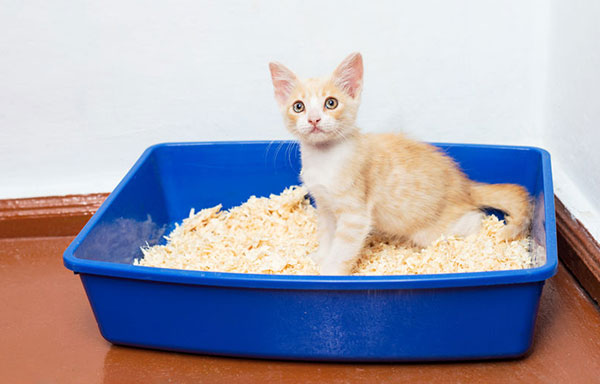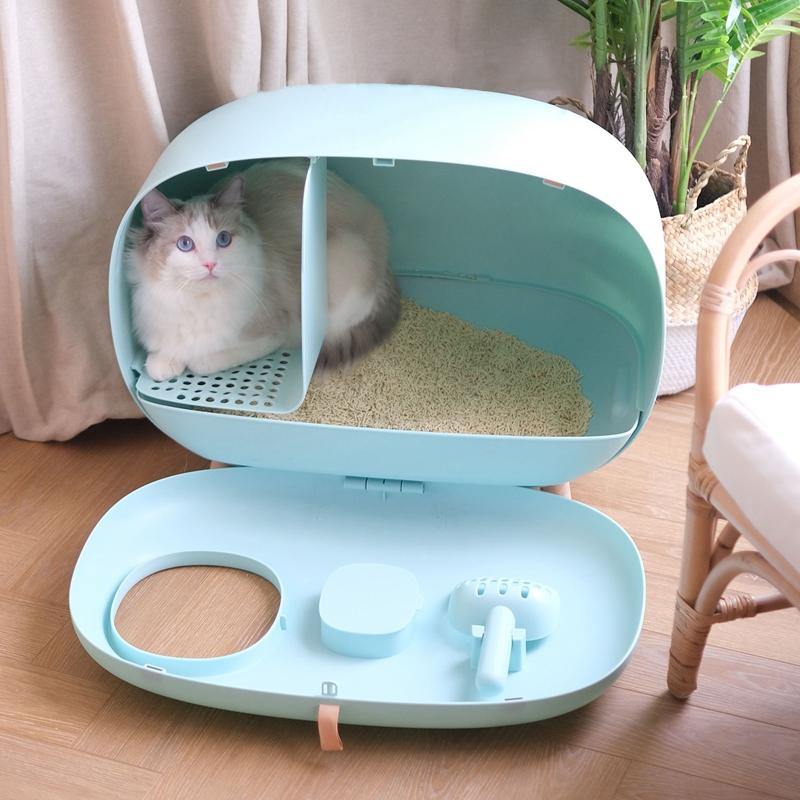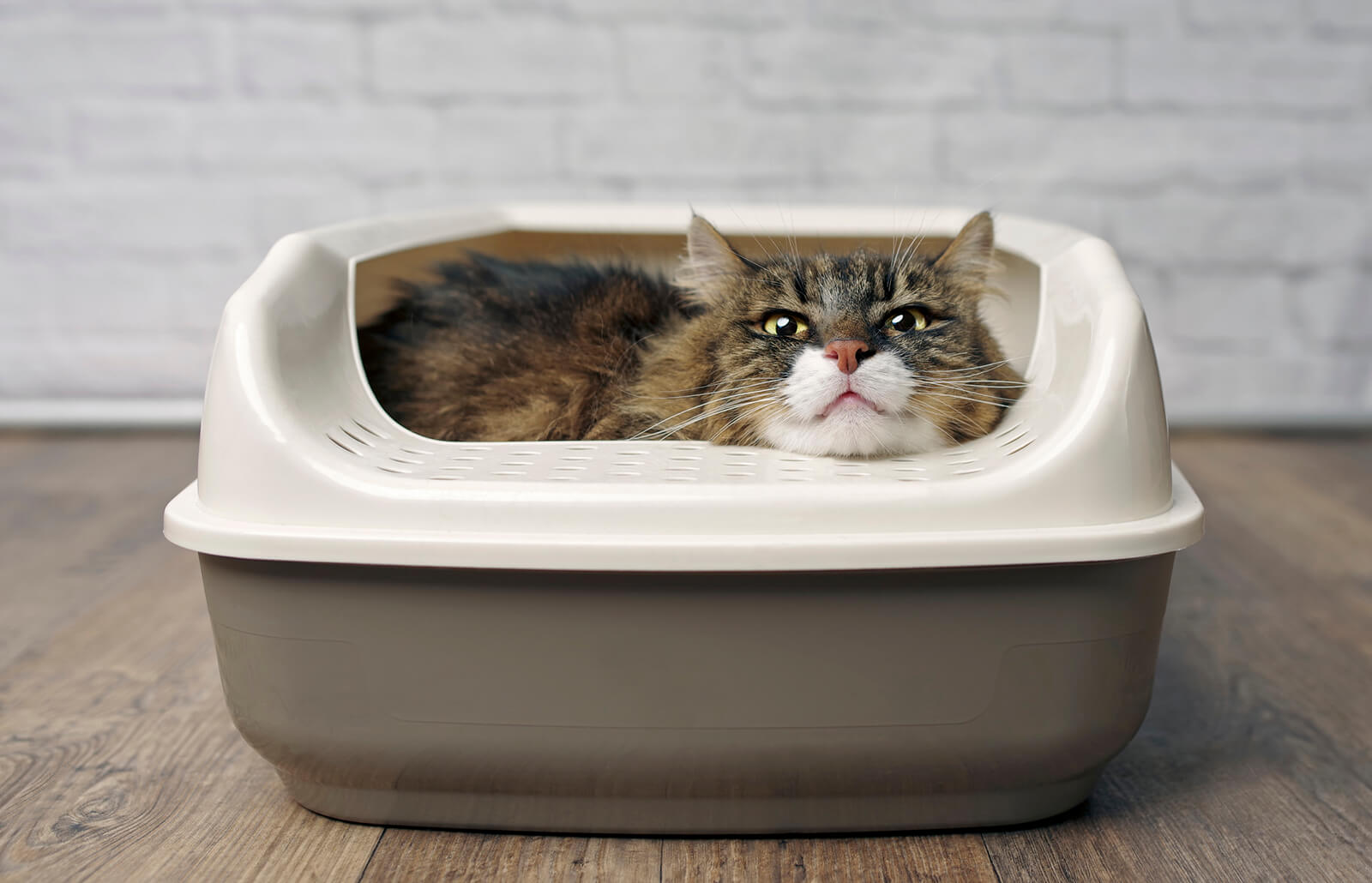Taking care of a cat is fulfilling but not cheap. From pet visits to grooming appointments and buying food, a kitty demands a lot in the way of finances.
Cat litter is also like diapers for human babies. Sometimes it looks as though you go through a bag of cat litter the same way a newborn goes through a pack of diapers.
Thanks to the high cost of living, any opportunity to save on pet supplies is welcome.
The use of cat litter depends on many things. Some people tend to change them too often. Others have more than one cat thus needing more.
However, there should be a standard that you can use to estimate whether you are using too much or too little of it.
So, just how long does a 25-pound bag of cat litter last?
The General Answer
When evaluating how much litter you need for a specified amount of time, you have to determine which type of litter you use in the first place.
For example, if using paper litter, expect to utilize 25 pounds or more in just one week.
Clumping litter is the most economical at only 7-10 pounds a week. That means if you have a bag of 25 pounds, it will last you 2.5 to 3.5 weeks.
For non-clumping litter, the general guideline is 15 pounds or more per week. With this in mind, a 25 lb. bag will last 1-2 weeks.
These estimates are for households with one pet. If you have more than one cat, you will have to change more often or place different litter boxes around the house.
Ultimately, you will need twice or thrice the stated amounts.
Equally, if have one cat but use two litter boxes, you’ll need more litter.

Clumping Litter
Clumping litter is the absorbent kind that forms clumps as soon as it comes in contact with any liquid.
The clumps can be removed from the box with relative ease leaving behind clean and dry litter in the tray.
Every time you clean the litter tray, you remove some of the litter. After a while, you will need to add a fresh batch to maintain a steady base layer which is usually approximately two inches deep.
If you use clumping litter, you have probably noticed that you don’t need to change it as often as the non-clumping type. This is especially true if you have a small cat or kitten and only one litter box.
One week requires about 7-10 pounds. The more you change, the more you use.
Some people can even go lower than 5 pounds if they are not obsessed with changing their cat litter too frequently.
So, one litter bag of 25 pounds will last you for 2-3.5 weeks, give or take. You can easily stretch it to a month if you wanted to.
Please note that if you have two litter boxes, the usage will go up by about 25-50%.
Additionally, for homes with more than one cat, multiply by the number of feline friends.
But generally, a 25 lb. bag of clumping litter will take you 2-4 weeks depending on your situation.
Non-Clumping Litter
Non-clumping litter is made of clay of plant-based materials such as corn, pine, beet pulp, and wood.
It is less absorbent than clumping litter but it is much cheaper.
It also absorbs large urine volumes and can control unpleasant odors especially if it has additional additives such as charcoal and baking soda.
The only issue with non-clumping litter is that it becomes saturated quickly causing a pool at the bottom of the box.
At this point, the whole box will need to be cleaned. Cat owners have to clean it at least once a week and put a fresh batch of cat litter in the box.
Because of the frequent litter changes, non-clumping litter gets depleted faster than clumping litter.
One cat and one litter box need a minimum of 15 pounds per week. If you have a 25 lb bag, expect it to last you 1-2 weeks.
For two or more cats, this may go for only one week. The same is true if you have several litter boxes around the home.
You are lucky if you have a kitten. The bag can go for more than two weeks.
However, if you have a big pet that eliminates heavily, expect to buy a bag every 1-1.5 weeks.
Paper Litter
Paper litter is made from recycled paper fibers fitted with odor control agents.
The papers are specially processed to make them highly absorbent.
Like clumping litter, paper litter doesn’t break apart or create cakes at the bottom when a cat urinates heavily on the tray. This makes clean-up easier.
With that said, paper litter needs frequent changing—once a week or more if you have more than one cat.
If left in the box for too long, it will cake at the bottom, creating a mess that is harder to deal with.
Generally, you need one 25 lb. bag of paper litter per week for one cat and one litter box.
For pet parents with more than one feline friend, don’t be surprised if you run out before the week expires.
Thankfully, paper litter is less expensive than clumping litter. But when you think about how much you use in a week, the cost will be in the range of clumping litter.
Track Your Usage

If you want to know exactly how much you use, why not calculate it for yourself.
First, add the litter to the normal level then weigh how much you have put in using a bathroom scale.
Now calculate the number of times you need to change the litter box and do the totals.
If the kitty needs 4 pounds at a time, it means a 25 lb. bag will go for 8 times.
Of course, the more the cats and the more frequent the changes, the higher the usage.
Be sure to clean the litter box often to prolong the lifespan of the litter.
Parting Thoughts
Like all living creatures, cats have to pee and poop. Those that haven’t been trained to go outside need a litter box to do their thing.
Cat litter consumption heavily depends on the number of cats, litter boxes, type of litter, frequency of changing, and the size of your cat.
Try to calculate your usage and come up with the right estimate for your household.
Related Posts:
How to Attract Cat to Litter Box (10 Sure-Fire Strategies)
How to Get Cat to Use Litter Box in New House (12+Tips)
5 Non-Absorbent Cat Litters For Urine Sample Collection
Litter Box with Carbon Filter—An Ingenious Way To Maximize Odor Control

Hi! I am Eleanor Price. I started this website after my cat, Louie, almost died from a case of botulism (a type of food poisoning often caused by bacteria that grow on food items). Turned out that my cat’s diet was the problem. I have made it my duty to provide the best information and recommendations about everything cat lovers need to know about their felines’ health and wellbeing. My goal is to find the most informative content on anything feline-related and share it with fellow hardworking kitty lovers.

